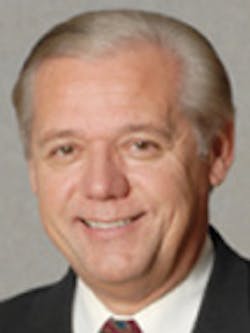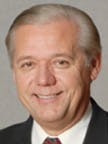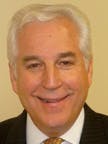Transitions Roundtable
We ask two experts the same question on a complex issue.
Question: I see the term capitalization rate used in some practice valuations. What does it mean?
EUGENE W. HELLER, DDS
Capitalization rate is a term that describes one part of one of the formulas used in one of the three commonly accepted methods for determining the value of a dental practice.
There are three basic methods of valuing a dental practice used today. The first is a market valuation method, which is defined as the value of the subject practice in comparison to sale values of other dental practices within a specific geographic region when adjusted for comparative levels of profit and gross receipts. This method is easiest to understand by considering a comparative real estate appraisal where the prices of three recently sold houses in the same neighborhood with similar characteristics are used to determine the asking price of the subject house.
The second method is a net asset method. By definition, this value is determined by adding the market values of the individual assets that are used by the dental practice in generating profits. These assets are broken down into two categories—tangible assets (dental and office equipment, technology, clinical supplies, and more), and intangible assets (things you cannot see, feel, or touch, such as goodwill).
The capitalization rate, or cap rate, is used in the third method of valuing a dental practice (or any business). It relates the value of anticipated profit or cash flow. When a dentist purchases all the assets of a dental practice, what he or she is primarily interested in is the future profit or cash flow that this practice will provide. This method is the primary valuation method of many CPAs who value dental practices. To apply this method, the available cash flow is projected into the future and then discounted to the present using an appropriate rate of return, which is commensurate with the risk of realizing the projected cash flows. To determine that value, the cash flow of the practice is divided by the cap rate. The cap rate is a compilation of various financial indicators as well as the perceived risk in the transaction.
For privately held dental practices, the commonly accepted cap rate is between 20% and 30% for a general practice. By example, if the available profit or cash flow for a specific practice is $200,000, divided by a cap rate of 25%, the value of the practice using this valuation method is $800,000.
Eugene W. Heller, DDS, Henry Schein VP of transitions, leads the Henry Schein Professional Practice Transitions team. He can be reached at (888) 477-8552 or [email protected].
ALLEN SCHIFF, CPA, CFE
If you have ever purchased a dental practice or intend to purchase a practice, you will be bombarded with papers to sift through as you perform your due diligence on the practice acquisition. No doubt you will come across an appraisal of the practice, or as we say in the accounting world, an estimate of value. This estimate will also include 20 to 30 pages of relevant information about the practice you intend to purchase. As you go through the estimate, you will notice the author mention a capitalization rate, or cap rate.
Although the Transitions Roundtable column does not allow for a long dialogue, I will attempt to define capitalization rate in layperson’s terms. Cap rate is a calculated rate of return that assists you, as a potential buyer (investor), with a dental practice acquisition. The cap rate will help you with your decision regarding whether or not the dental practice acquisition makes economic sense. It reflects the potential rate of return of capital on a dental practice investment.
If the cap rate reflects the potential rate of return on a dental practice investment, you may ask, “If I am going to invest in a dental practice acquisition, what should I expect the rate of return to be in order for the acquisition to be a good investment?” As an example, let’s assume that you invest in the stock market, and the return on all of your investments is 10% annually. You may equate the risk associated with investing in a dental practice as twice as risky, and as a result, you may be seeking a 20% return on your dental practice investment.
In order to help you calculate the cap rate on a dental practice acquisition, I have outlined how it is used in arriving at a dental practice’s estimate of value, or your investment acquisition cost. Let’s assume you’re looking at a practice that is collecting $1 million annually, has excellent overhead at 60%, and has a net profit at 40% or $400,000. You wonder what a reasonable price is for this dental practice acquisition, and how the cap rate impacts your decision (table 1).
Table 1: Pricing and cap rate | ||
Annual collections | $1,000,000 | |
Less: Overhead | (600,000) | 60% |
=Net profit | $400,00 | |
Less: Reasonable salary to owner | (262,500) | 26.25% |
=Excess earnings | $137,500 | |
Cap rate (20%) | x5 | |
=Estimate value | $687,500 | |
Based on this example, if you invested $687,500 for this $1 million dental practice, you would expect to receive a 20% rate of return, or $137,500 annually (20% x $687,500), after you were paid a reasonable salary of $262,500, or 26.25% of the annual collections.
Why did I multiply the excess earnings by five? This is because the integer of a 20% return is five, or five times 20%, which equals 100%.
The last part of the example that requires an explanation is how I arrived at a reasonable salary. It is assumed the general dentist is generating 75% of the income and is compensated at a rate of 35% of collections, or 75% x 35% = 26.25%. Anything in excess of the reasonable salary is called excess earnings and is capitalized using a reasonable cap rate to arrive at what an investor is willing to invest in a dental practice acquisition.
I hope this information has given you some clarity of the term capitalization rate and that you are now informed when making a decision about a dental practice acquisition and how a cap rate impacts the decision.
Allen Schiff, CPA, CFE, is a founding member of the Academy of Dental CPAs. This group of very knowledgeable CPA firms specializes in practice management services for the dental industry. He serves on the ADCPA executive committee and is the chairperson of the ADCPA marketing committee. Allen can be reached at (410) 321-7707 or [email protected].


